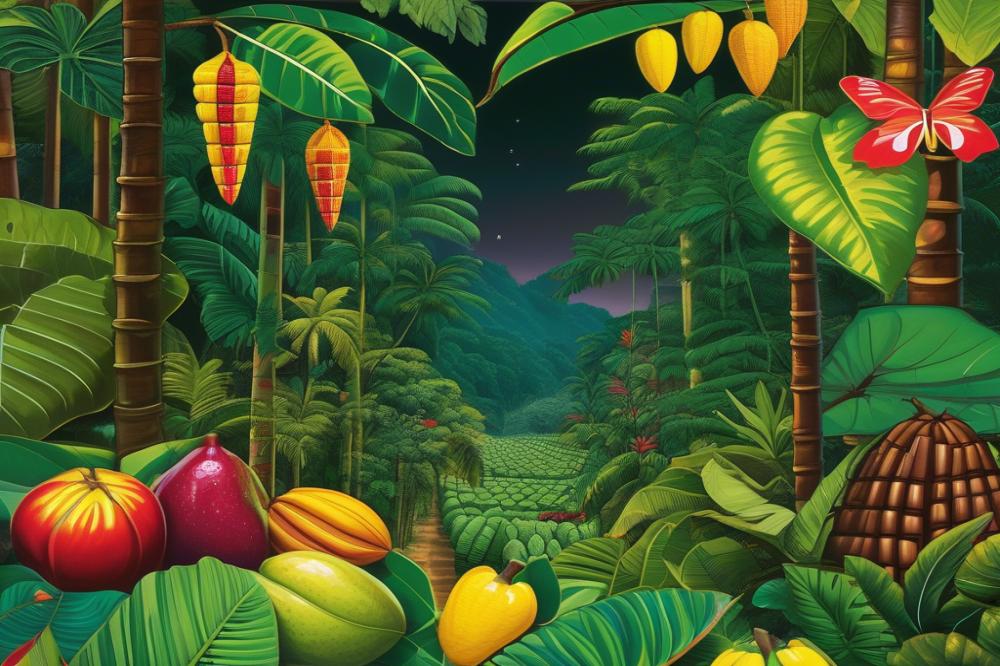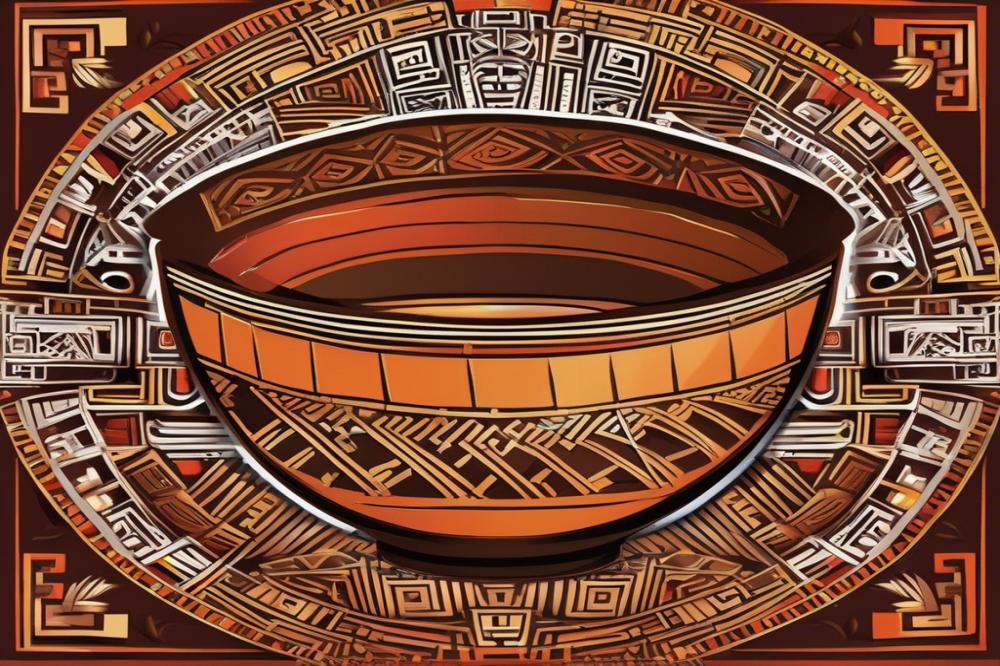Introduction
The journey of chocolate begins with a remarkable discovery that dates back centuries. Cacao, the key ingredient in chocolate, has a rich and captivating history. This delightful treat, enjoyed by many today, has roots deeply embedded in ancient cultures. The Amazon Rainforest is recognized as the birthplace of this treasured plant.
For indigenous cultures, Cacao was more than just a food source. It played a vital role in ceremonies and traditional uses, symbolizing wealth and spirituality. Communities have cultivated this plant for generations, developing unique methods that are both sustainable and respectful of the earth. Agriculture surrounding cacao has also been shaped by these rich cultural practices.
Biodiversity within the Amazon Rainforest contributes significantly to the quality of cacao. This region boasts a variety of plants and animals that create a complex ecosystem. Understanding the ecological impact of cacao cultivation is essential. Sustainable farming practices can help protect the delicate balance of life in this vibrant habitat.
As we explore the themes of discovery and cultivation, we’ll see how these elements intertwine. Historical insights will reveal how cacao transformed over the ages. The interplay between indigenous knowledge and modern agricultural techniques offers valuable lessons for future generations. The story of cacao is not merely about chocolate; it’s also about the people and the land that nurtured it.
The Discovery of Cacao
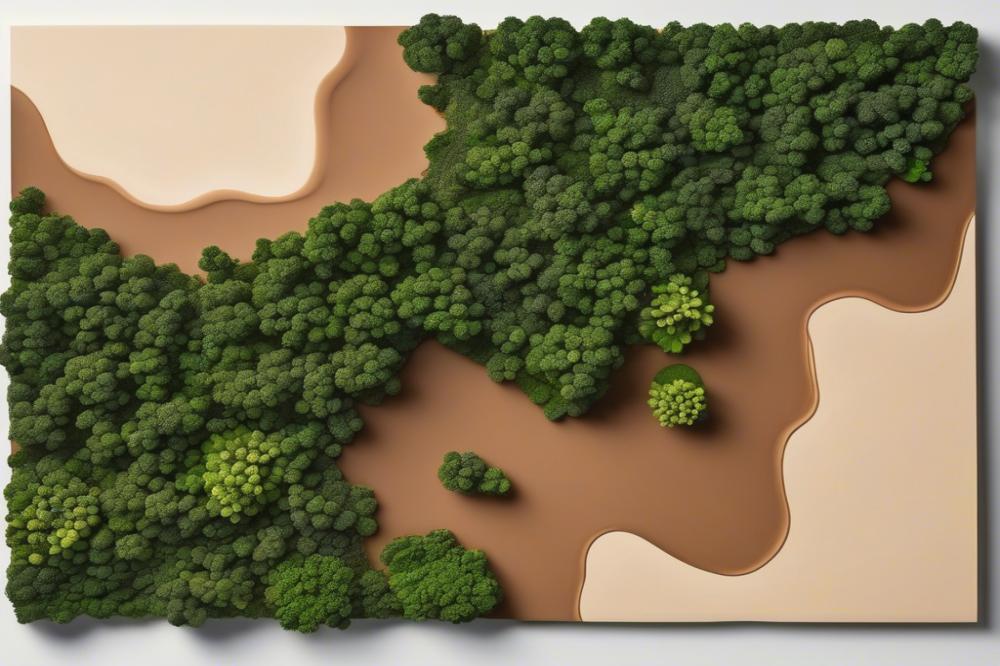
The rich history of cacao begins deep within the Amazon rainforest. Indigenous cultures first discovered the plant thousands of years ago. They recognized its value early on, using its beans for a variety of purposes. Interestingly, some tribes created drinks from ground beans, mixing them with spices and herbs. This beverage became a significant part of their rituals and celebratory events.
Archaeological evidence reveals fascinating details about how ancient civilizations cultivated the plant. Pottery containing residues from cacao drinks has been uncovered in sites across South America. These artifacts show that cacao was not merely consumed; it held cultural importance. It was often used as a currency, highlighting its economic significance.
As agriculture developed, communities refined their methods, contributing to biodiversity. Sustainable farming techniques emerged, allowing them to cultivate the plant effectively. The ecological impact of these practices was profound, promoting a balance in the rainforest ecosystem. Over time, people passed down traditional uses through generations, connecting communities to their ancestry.
Cacao’s appeal spread beyond local tribes, drawing attention from surrounding regions. The arrival of the Spanish in the 16th century marked a pivotal moment in its history. Explorers recognized the value of this ‘food of the gods’ and began exporting it. Eventually, it evolved into the chocolate we enjoy today, though its roots remain firmly planted in the Amazon.
The story of this remarkable plant is not just about consumption. It is about the relationship between human cultures and the environment. Understanding its journey through time helps us appreciate not just chocolate, but also the rich heritage surrounding its discovery.
Cacao and Indigenous Cultures
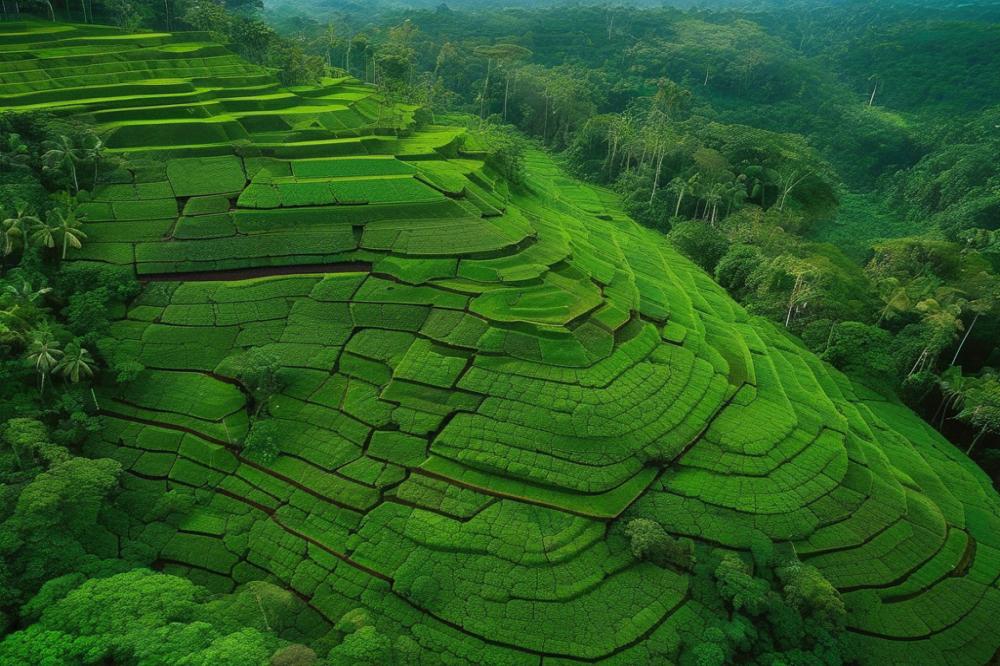
In the Amazon rainforest, cacao has played a vital role in the lives of various tribes. These indigenous cultures have a rich history that intertwines with this valuable crop. Cacao was not merely a food source; it was the center of many traditions and rituals. Among the Maya and Aztecs, it held a status far beyond a mere commodity.
The Maya frequently used cacao in their ceremonies, viewing it as a divine gift. They would prepare a frothy drink from cacao beans, often flavored with spices and chilies. This beverage was consumed during religious rituals, symbolizing life and fertility. For them, the tree was sacred, with a deep connection to their spiritual beliefs.
Aztec society also revered cacao, using it as currency. The rich, bitter drink was reserved for the elite. Soldiers received cacao as a reward, while it served as an energizing refresher during battles. Its importance extended beyond nourishment; it was tied to social status and power. This beverage reflected the complex socio-economic systems in place.
Agriculture around cacao is essential for many indigenous peoples. The biodiversity within the Amazon allows for sustainable farming practices that support their livelihoods. Growing cacao involves respecting the land and understanding the delicate ecosystem. This connection promotes ecological balance and sustainability, ensuring that future generations can benefit.
Traditional uses of cacao go further than just drinks. Various tribes have incorporated it into their healing practices. They believe cacao possesses medicinal properties. This cultural heritage is rich with knowledge passed down through generations, showcasing a profound respect for natural resources.
In modern times, the cultivation of cacao remains a cornerstone for many communities. It supports local economies and maintains cultural identities. Many farmers engage in fair trade practices, which help improve their financial stability. This economic aspect is crucial as it empowers indigenous groups and strengthens their voices in broader discussions about land and resources.
The relationship between these communities and cacao is one of mutual respect. They recognize the ecological impact of their farming methods. Fostering biodiversity through traditional agricultural techniques not only preserves the environment but also enhances the quality of the cultivars. This holistic approach ensures that both the crop and culture thrive.
Biodiversity of the Amazon Rainforest
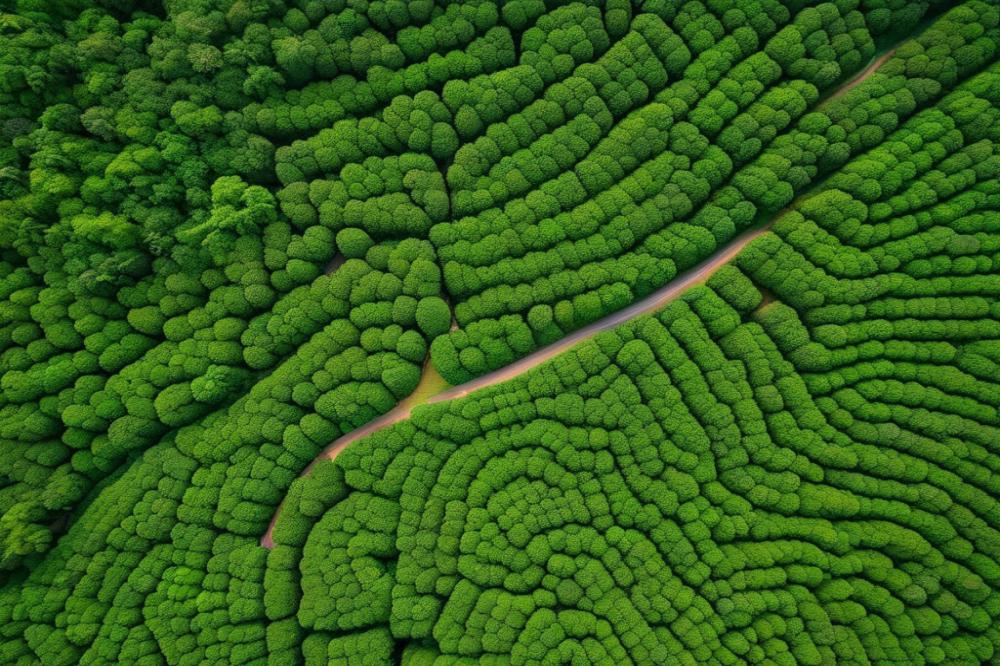
The Amazon Rainforest is a treasure trove of biodiversity. Within its vast expanse, countless species of plants and animals coexist in a delicate balance. This ecosystem plays a crucial role in the environmental health of our planet. When cacao trees are cultivated, they interact harmoniously with this vibrant array of life. Historically, indigenous cultures have thrived alongside these trees, integrating them into their daily existence.
These trees create a unique habitat for various organisms. Birds, insects, and mammals find shelter and food within cacao plantations. This coexistence promotes a healthy ecosystem, as many species rely on each other for survival. Each tree contributes to the fabric of the environment, supporting life in ways that go beyond simple agriculture.
Moreover, cacao cultivation can positively impact biodiversity. By adopting sustainable farming practices, farmers can nurture the environment rather than harm it. For instance, shade-grown cacao allows natural flora to flourish, creating a habitat for numerous creatures. Such methods not only protect wildlife but also enhance the quality of the crop.
The rich history of cacao is closely tied to its traditional uses by diverse indigenous cultures. They understood that the land must remain healthy to produce abundant resources. This knowledge has been passed down through generations. As a result, the cultivation of cacao is more than just agriculture; it is about maintaining a connection to the ecosystem.
Engaging in practices that boost biodiversity is essential. When farmers protect the native plant species and wildlife, they create a more resilient system. This diversity is vital for the long-term success of the cacao industry. Healthy ecosystems can resist pests and diseases, reducing the need for chemical interventions. In turn, this approach promotes sustainability and limits ecological impact.
As the discovery of cacao continues to unfold, so does its impact on biodiversity. Understanding the interconnectedness of these elements is key to successful farming in the rainforest. Cacao cultivation can be a model for sustainable practices, showing how agriculture can align with ecological goals. The future of chocolate may very well depend on how well we respect and promote the rich biodiversity of the Amazon.
Cacao Cultivation Practices
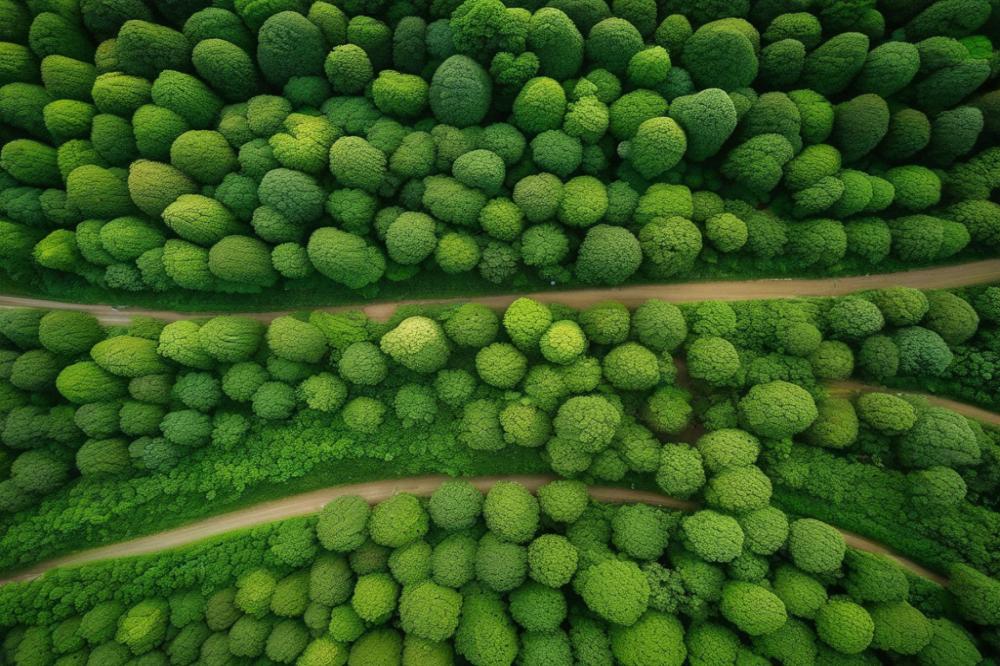
The history of cacao cultivation in the Amazon Rainforest is rich and fascinating. Indigenous cultures have cultivated this valuable plant for thousands of years. They used it not only for food but also for ceremonial purposes. In modern times, the allure of chocolate has transformed those ancient practices into a global industry. Both traditional and modern farming techniques play a vital role in cacao growth.
Soil quality is crucial for healthy cacao trees. Fertile, well-drained soil typically supports better yields. Farmers often use organic fertilizers to enhance the soil’s nutrient content. These agricultural practices are essential in preventing soil depletion, which can occur over time. On the other hand, climate conditions also greatly affect growth. Cacao thrives in warm, humid environments with consistent rainfall throughout the year.
Traditional Farming Techniques
Traditionally, substratum plants are planted alongside cacao to create a biodiverse ecosystem. This shade helps protect the young trees from harsh sunlight. Many farmers still rely on knowledge passed down through generations, maintaining a connection to their roots. The use of agroforestry practices allows for greater biodiversity, encouraging beneficial insects and birds to thrive.
Modern Approaches
Recent innovations in agriculture have introduced new techniques for cacao farming. Some farms now utilize technology to monitor soil health and moisture levels. Sustainable farming practices are gaining popularity, as consumers become more aware of ecological impacts. These modern methods aim for efficiency while also being aware of environmental repercussions. However, with technology comes a need for education and resources, which not all farmers have access to.
Challenges Faced by Farmers
Farmers encounter numerous challenges in cultivating cacao. Climate change poses a significant risk, affecting weather patterns and rainfall. Pests and diseases can destroy entire crops, leading to financial hardships. Economic pressures also force many farmers to prioritize quantity over quality. This can ruin the delicate balance between tradition and modern demands.
Furthermore, market fluctuations can leave farmers vulnerable. This uncertainty makes it difficult to invest in sustainable practices. The desire for fair prices is more important than ever. Collectives and cooperatives offer some support, but not all farmers are part of these networks. As a result, many struggle to maintain their livelihoods while preserving their traditional uses of cacao.
Ultimately, the path forward requires collaboration among farmers, governments, and consumers. Understanding the complex realities of cacao cultivation can lead to better support systems. Supporting sustainable practices can help create a brighter future for farmers and the cherished chocolate we all enjoy.
Ecological Impact and Sustainable Farming
Cacao farming has a significant ecological impact on rainforest conservation. The history of cacao cultivation is long, intertwined with indigenous cultures that have valued it for centuries. However, as demand for chocolate grows, pressures on the Amazon rainforest increase. This expansion can lead to deforestation, reducing biodiversity and harming ecosystems.
Sustainable farming practices are essential to minimizing environmental harm. Agroforestry, for instance, allows farmers to grow cacao alongside other plants. This method promotes biodiversity by creating habitats for various species. Moreover, it can improve soil quality and water retention. Crop rotation is another practice that helps maintain soil nutrients, reducing the need for chemical fertilizers.
Some initiatives focus on promoting sustainable cacao production. Organizations work with farmers to adopt eco-friendly methods. They provide training in organic farming techniques, which can benefit both the environment and local communities. Certification programs also encourage sustainable practices by rewarding farmers who adhere to high environmental standards. These programs connect consumers with ethically sourced products, helping to drive positive change in the industry.
Traditional uses of cacao included ceremonial drinks and medicinal applications. By honoring these cultural practices, farmers can add value to their crops while preserving their heritage. This not only supports the local economy but also emphasizes the importance of conservation.
Restoring degraded lands through sustainable agriculture is becoming popular. It allows farmers to cultivate cacao without clearing more forest. These efforts can revitalize ecosystems and support wildlife. By integrating conservation with agriculture, the unique beauty of the rainforest can coexist with chocolate production.
Education plays a critical role in all of this. Raising awareness about the ecological impact of cacao farming encourages consumers to make informed choices. Simple actions, like buying from sustainable sources, can significantly influence farming practices. Everyone has a role in protecting the rainforest while enjoying the delightful taste of chocolate.
The Journey from Cacao to Chocolate
The transformation of cacao from a simple bean to the delicious chocolate we savor today is a fascinating story. Initially, indigenous cultures in the Amazon rainforest discovered cacao thousands of years ago. They recognized its value, using it in various traditional uses, from drinks to religious rituals. The process began with harvesting the cacao pods, which contain the precious beans. This marked the first step in a long journey.
After collecting the pods, farmers extract the beans, surrounded by a sweet, sticky pulp. This pulp is often fermented and played a role in ancient recipes. Fermentation is crucial, as it develops the rich flavors that people love in chocolate. Once fermented, beans undergo drying and roasting. Roasting gives the beans their signature taste and aroma. The temperatures used can vary. Each method produces distinct flavors.
After roasting, the beans are cracked open to reveal nibs inside. These nibs are then ground into a paste known as chocolate liquor. It’s important to note that this paste contains cocoa solids and cocoa butter, which are key components in chocolate. This stage opens new possibilities for creation. By adding sugar, milk, or other flavorings, chocolatiers craft an array of chocolate types. Milk chocolate, dark chocolate, and white chocolate all emerge from this versatile base.
Historically, the evolution of chocolate production has mirrored societal changes. During the 18th century, the beverage gained popularity in Europe. Chocolate houses became trendy, much like coffee shops today. As demand grew, agriculture expanded, leading to cultivation in various regions around the world. This marked the beginning of the global chocolate industry.
Today, this industry is massive and multifaceted. It involves countless players, from farmers to manufacturers. In many cases, farmers face challenges related to biodiversity and sustainable farming practices. The ecological impact of cacao cultivation is significant. Many farms disrupt local ecosystems, threatening wildlife and plant species. Therefore, a growing movement promotes responsible farming methods. This shift aims to protect the environment while supporting farmers.
Many chocolate brands are now focusing on ethical sourcing and transparency. More consumers demand knowledge about the origins of their treats. This desire drives companies to explore fair trade practices. As a result, they work directly with farmers to promote fair wages and better working conditions. The future of chocolate looks promising, but it is deeply intertwined with agricultural practices.
Final Thoughts on the Significance of Cacao in the Amazon
The discovery of cacao in the Amazon rainforest opened a new chapter in history. This remarkable plant has become more than just a source of chocolate; it represents a deep cultural connection with indigenous communities. Their traditional practices showcase the harmony between humans and nature. It’s crucial that these ways of living are respected and preserved. Each method passed down through generations has taught us valuable lessons about sustainability.
Biodiversity in the Amazon is under threat from modern farming techniques. Protecting the rainforest and its rich ecosystem is essential. Without it, we could lose plants, animals, and knowledge that have survived for centuries. The cacao plant thrives in this intricate environment, and its survival depends on healthy biodiversity. Supporting local farmers who use sustainable practices can make a significant impact.
Public awareness about these issues is vital. Connecting with the culture surrounding cacao can lead to greater appreciation for the efforts needed to maintain it. When we choose products that support indigenous farming, we participate in a larger movement. Every chocolate bar made from ethically sourced cacao can contribute to the preservation of history and the environment. Let’s take a stand for sustainable farming and celebrate the diverse cultures that honor this unique plant. Together, we can make a difference.

